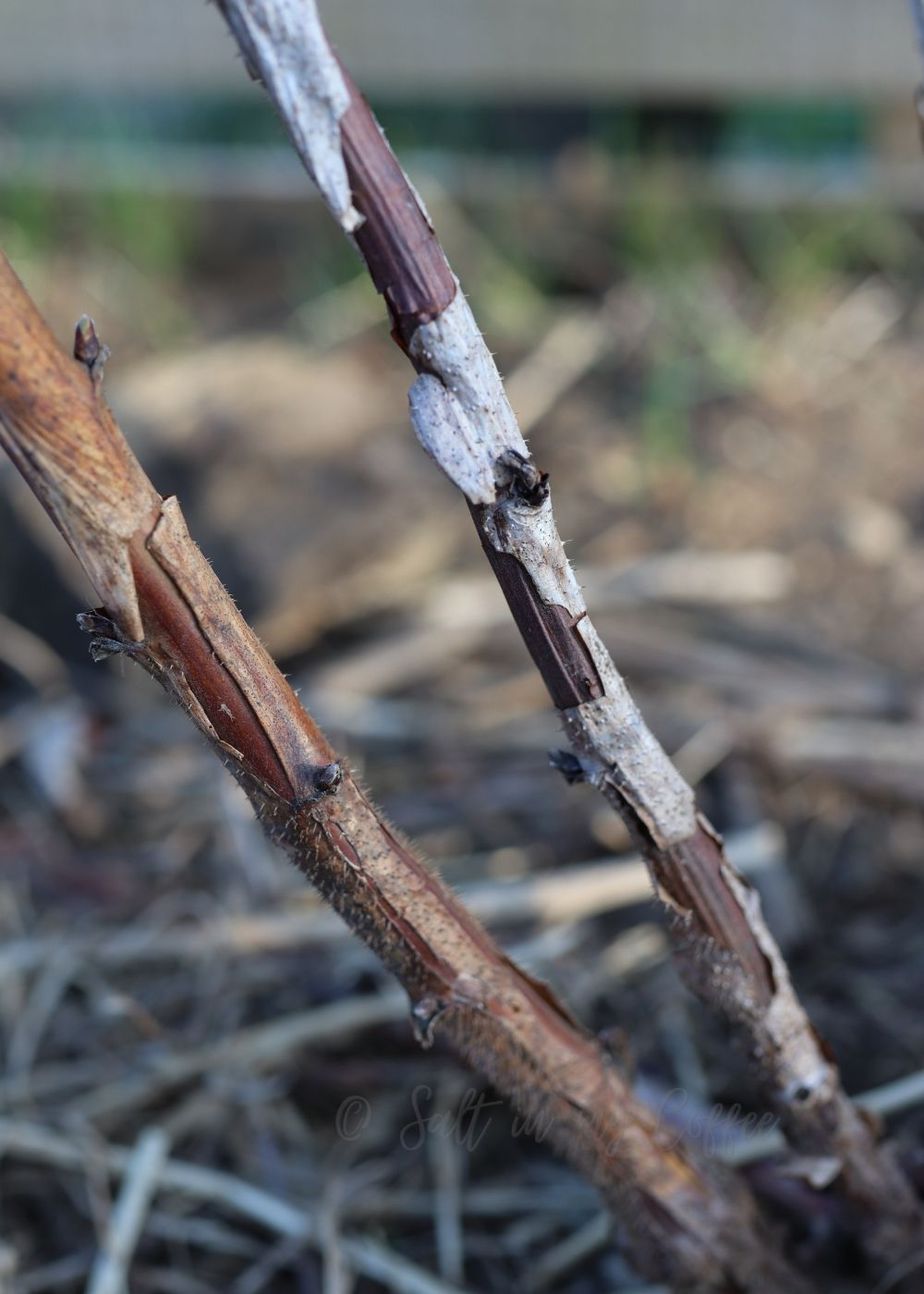To determine if a raspberry plant is dead, inspect the stems for signs of life like green color and flexibility. Additionally, check for new growth and healthy leaves when determining the plant’s status.
It’s important to regularly monitor the raspberry plant for any potential signs of decay or disease to ensure its overall health and vitality. With proper care and attention, raspberry plants can thrive and produce delicious berries for years to come.

Credit: www.reddit.com
Signs That Indicate Your Raspberry Plant May Be Dead
There are several signs that can indicate whether your raspberry plant is dead or not. One of the most noticeable signs is the condition of the leaves and stems. If they are withered, brown, or mushy to the touch, it may be a sign that your plant is no longer alive.
Another indication is the lack of new growth. If you don’t see any new shoots or leaves appearing on your raspberry plant, it could be a sign that it has died. Keep in mind that it’s normal for the plant to go dormant during the winter months, so be patient and wait for spring to see if any new growth occurs.
Lastly, the absence of flowers or fruit can also be a sign that your raspberry plant is no longer alive. Raspberry plants typically produce flowers and fruit during certain times of the year, so if you don’t see any, it could mean that the plant has died or is unhealthy.
PHow to Tell If Raspberry Plant is Dead: Step by Step Guide
Physical Examination Of The Plant
If you’re wondering how to determine if your raspberry plant is dead, a physical examination is key. Look for signs like dry and brittle stems, lack of new growth, and absence of leaves to make an accurate assessment.
When assessing whether a raspberry plant is dead or alive, conducting a physical examination is essential. Here are three key aspects to consider:
Checking for flexibility in the stems
Gently grasp the stems and try to bend them. Living raspberry plant stems are known for their flexibility, allowing them to arch and sway. If the stems are brittle and snap easily, it may indicate that the plant has died.
Inspecting the color and texture of the stems
Healthy raspberry plant stems are typically green or reddish in color and have a smooth texture. On the other hand, brown or shriveled stems can be an indication of a plant in poor health or deceased.
Examining the condition of the leaves
Alive raspberry plants will have vibrant, green leaves. During the growing season, leaves should be present and well-distributed on the stems. If the leaves are wilted, discolored, or entirely absent, it suggests that the plant may no longer be alive.
Soil Examination
One of the key indicators that a raspberry plant may be dead is to examine the soil. Soil examination can provide insights into the plant’s health and determine if it can be revived or needs to be replaced.
Assessing the moisture level of the soil is the first step in determining the plant’s condition. Dry, compacted soil could indicate a lack of proper watering or insufficient drainage, which may lead to the plant’s death. On the other hand, wet and waterlogged soil can be an indicator of overwatering or poor drainage, which can also cause the plant to die.
Checking for signs of root rot or fungal growth is another important aspect of soil examination. Decaying roots, foul smell, or dark, slimy appearance can be clear indications of root rot, which is often fatal for raspberry plants. Additionally, the presence of mold or fungal growth on the soil’s surface can hinder the plant’s growth and eventually lead to its demise.
Evaluating the soil pH is crucial as raspberries thrive in slightly acidic soil with a pH range of 5.6 to 6.2. If the soil pH is too high or too low, it can negatively impact the plant’s health and eventually result in its death. Testing the soil pH with a kit can help determine if it needs adjusting to provide optimal conditions for the raspberry plant to thrive.
Identifying Potential Causes Of Plant Death
Identifying potential causes of plant death can help determine if a raspberry plant is dead. One common cause is frost or extreme weather conditions. When exposed to freezing temperatures, raspberry plants can suffer damage, leading to their demise. Inspect the plant for any signs of freeze damage, such as blackened or withered stems and leaves.
Pests and diseases can also contribute to the death of a raspberry plant. Some common pests include aphids, spider mites, and raspberry crown borers. Look for physical damage or the presence of pests on the plant.
Improper watering or drainage can be another culprit. Overwatering can lead to root rot, while underwatering can cause the plant to dry out and wither. Check the soil moisture level and ensure proper drainage to avoid such issues.
By considering these factors, you can evaluate the condition of a raspberry plant and determine if it is still alive or if it has succumbed to environmental factors, pests, or poor care practices.
Strategies To Revive A Dying Raspberry Plant
Reviving a dying raspberry plant requires careful strategies, such as pruning and removing dead parts, adjusting watering and drainage, and applying fertilizers or organic amendments.
Damaged or dead parts of the plant should be promptly pruned and removed to prevent further spread of diseases or pests. Pruning also promotes new growth and helps the plant redirect its resources to healthier areas.
Adjusting watering is crucial to prevent both underwatering and overwatering. Raspberry plants prefer consistently moist soil, but excessive water can lead to root rot. Regularly check the moisture level of the soil and adjust watering accordingly.
Proper drainage is essential for raspberries. Ensure that the soil doesn’t become too soggy, as it can suffocate the roots. Well-draining soil or raised beds can help improve drainage.
Applying fertilizers or organic amendments can provide the necessary nutrients for revitalizing the plant. Consider using a balanced fertilizer formulated for raspberries or organic alternatives like compost or well-rotted manure.
When It Is Time To Give Up On A Raspberry Plant
Assessing the severity of plant damage is essential in determining when it is time to give up on a raspberry plant. Look for signs such as wilted leaves, brittle branches, and discolored stems. If the plant has stopped producing new growth and the existing foliage shows no signs of improvement, it may indicate that the plant is beyond revival.
Understanding the limitations of revival methods is important as well. While pruning, fertilizing, and providing adequate water can help revive a struggling raspberry plant, there are instances when the damage is too severe for these measures to be effective. If the plant’s root system is extensively damaged or if it has been affected by a specific disease or pest infestation, it may be impossible to save the plant.
Considering the cost and effort of revival versus replacement is also a crucial factor to consider. Reviving a raspberry plant may require significant time, resources, and expertise. In some cases, it may be more practical to replace the plant with a new, healthy one rather than investing in extensive revival efforts that may not guarantee success.
Frequently Asked Questions On How To Tell If Raspberry Plant Is Dead
How Can I Tell If My Raspberry Plant Is Dead?
To determine if your raspberry plant is dead, start by checking for any signs of life such as new growth or green leaves. If there is no growth and the plant is brittle or brown, it may be dead. Additionally, try scratching the stem to see if there is any green underneath.
If all else fails, you can dig up the plant to check the root system for signs of life.
What Are The Common Signs Of A Dead Raspberry Plant?
Some common signs of a dead raspberry plant include lack of new growth, dry and brittle stems, and brown or withered leaves. In some cases, the plant may have a foul odor or show signs of decay. If you notice these symptoms, it’s likely that your raspberry plant has died.
Can A Raspberry Plant Recover From Being Dead?
In most cases, a raspberry plant that is dead cannot be revived. However, if there are still some healthy roots, you can try pruning the dead parts and providing proper care to encourage new growth. It’s important to note that the chances of recovery are slim, and it’s often better to replace the plant if it is truly dead.
Conclusion
Being able to identify whether a raspberry plant is dead or alive is crucial for any gardener. By carefully observing the plant for signs such as dried leaves, lack of new growth, or a brittle stem, you can determine if it needs reviving or replacing.
Remember to regularly maintain and nurture your raspberry plants to ensure their health and productivity in your garden. Happy gardening!

